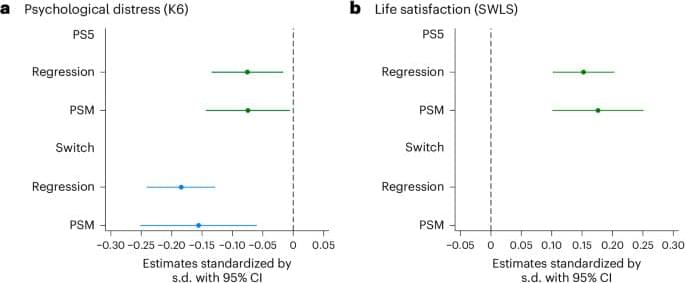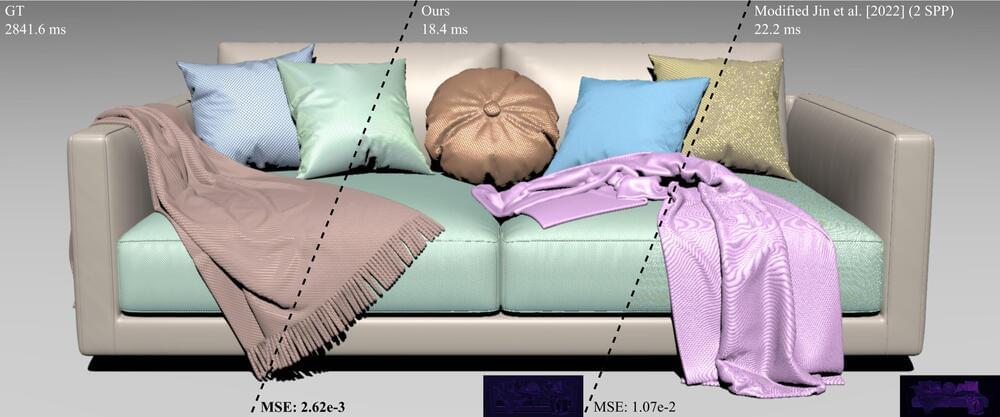The trailer featured quotes from famous film critics panning Francis Ford Coppola’s previous films that appear to be made up by ChatGPT.



In a study published in Cell Reports Physical Science (“Electro-Active Polymer Hydrogels Exhibit Emergent Memory When Embodied in a Simulated Game-Environment”), a team led by Dr Yoshikatsu Hayashi demonstrated that a simple hydrogel — a type of soft, flexible material — can learn to play the simple 1970s computer game ‘Pong’. The hydrogel, interfaced with a computer simulation of the classic game via a custom-built multi-electrode array, showed improved performance over time.
Dr Hayashi, a biomedical engineer at the University of Reading’s School of Biological Sciences, said: Our research shows that even very simple materials can exhibit complex, adaptive behaviours typically associated with living systems or sophisticated AI.
This opens up exciting possibilities for developing new types of ‘smart’ materials that can learn and adapt to their environment.

Episode · Walden Pod · In this clip, we discuss natural teleology. Subscribe at patreon.com/waldenpod for the patron feed, where you can hear the full version of this episode and others.

While large language models (LLMs) have demonstrated remarkable capabilities in extracting data and generating connected responses, there are real questions about how these artificial intelligence (AI) models reach their answers. At stake are the potential for unwanted bias or the generation of nonsensical or inaccurate “hallucinations,” both of which can lead to false data.
That’s why SMU researchers Corey Clark and Steph Buongiorno are presenting a paper at the upcoming IEEE Conference on Games, scheduled for August 5–8 in Milan, Italy. They will share their creation of a GAME-KG framework, which stands for “Gaming for Augmenting Metadata and Enhancing Knowledge Graphs.”
The research is published on the arXiv preprint server.



Lex Fridman Podcast.
433 videos.

Recent advances in the field of artificial intelligence (AI) and computing have enabled the development of new tools for creating highly realistic media, virtual reality (VR) environments and video games. Many of these tools are now widely used by graphics designers, animated film creators and videogame developers worldwide.
One aspect of virtual and digitally created environments that can be difficult to realistically reproduce is fabrics. While there are already various computational tools for digitally designing realistic fabric-based items (e.g., scarves, blankets, pillows, clothes, etc.), creating and editing realistic renderings of these fabrics in real-time can be challenging.
Researchers at Shandong University and Nanjing University recently introduced a new lightweight artificial neural network for the real-time rendering of woven fabrics. Their proposed network, introduced in a paper published as part of the Special Interest Group on Computer Graphics and Interactive Techniques Conference Conference Papers ‘24, works by encoding the patterns and parameters of fabrics as a small latent vector, which can later be interpreted by a decoder to produce realistic representations of various fabrics.
2001: CREATING KUBRICK’S SPACE ODYSSEY chronicles the creation of one of the most influential films in the history of cinema. This new documentary examines the work of legendary director Stanley Kubrick and iconic novelist Arthur C. Clarke in creating what they called “the proverbial good science fiction movie.” Filmmaker Roger Lay, Jr. tackles the enigmatic film through interviews with 2001 star Keir Dullea (who played astronaut Dave Bowman) and choreographer Dan Richter (who played Moonwatcher, the proto-human ape who learned to use the first tool). Both provide personal insights into their work on the groundbreaking film.
Other interviews include 2001 visual effects technician Brian Johnson (Academy Award winner for Alien and Star Wars: The Empire Strikes Back), film historian Michael Benson (author of Space Odyssey: Kubrick, Clarke, and the Making of a Masterpiece), and technologist Jules Urbach (CEO of OTOY). They discuss not only the revolutionary visual effects of the Kubrick film, but also the movie’s enduring influence.
2001: CREATING KUBRICK’S SPACE ODYSSEY features museum-quality digital re-creations of the original 2001 sets including interiors of the spaceship Discovery and the mysterious alien hotel room by Daren Dochterman, Mark Spatny, Carlos Baena, and a talented team of CG artists and animators at OTOY, including James Hibbert, Geoff Holman, J.J. Palomo, Neil Smith, and Aaron Westwood.
The documentary was produced by Roger Lay, Jr, along with Michael Okuda and Denise Okuda. Executive producer, Jules Urbach.
Read more about the project on the OTOY blog:
OTOY Presents “2001: Creating Kubrick’s Space Odyssey” Documentary